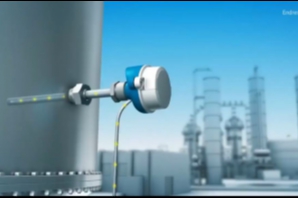
Temperature Transmitter
A temperature transmitter is a device used to measure and convert temperature readings from a temperature sensor into electrical signals that can be transmitted and interpreted by other devices or systems. It is commonly used in industrial applications where temperature monitoring and control are critical.
The basic operation of a temperature transmitter involves three main components: a temperature sensor, a signal conditioner, and a communication interface.
1. Temperature Sensor: The temperature sensor is the primary component that directly measures the temperature. There are various types of temperature sensors available, including thermocouples, resistance temperature detectors (RTDs),and thermistors. The selection of the sensor depends on factors such as the temperature range, accuracy requirements, and environmental conditions.
2. Signal Conditioner: The signal conditioner is responsible for converting the raw temperature readings from the sensor into a suitable electrical signal. It typically amplifies and linearizes the sensor output to improve accuracy and stability. The signal conditioner may also compensate for factors such as sensor nonlinearities and lead wire resistance to provide more precise temperature measurements.
3. Communication Interface: The communication interface allows the temperature transmitter to transmit the converted temperature signal to other devices or systems for further processing or display. Common communication protocols used in temperature transmitters include analog signals (e.g., 4-20 mA current loop) and digital protocols (e.g., HART, Foundation Fieldbus, Profibus, Modbus).
Temperature transmitters offer several advantages over direct temperature measurements. They can provide electrical isolation between the sensor and receiving equipment, allowing for safe and accurate measurements in harsh or hazardous environments. Additionally, they can transmit temperature signals over long distances without significant signal degradation, making them suitable for remote monitoring and control applications.
Temperature transmitters find widespread use in various industries, including oil and gas, chemical processing, power generation, HVAC (heating, ventilation, and air conditioning),and industrial automation. They are often integrated into control systems, distributed control systems (DCS),programmable logic controllers (PLCs),and supervisory control and data acquisition (SCADA) systems to enable temperature monitoring, control, and data logging.
1. Temperature Sensor: The temperature sensor is the primary component that directly measures the temperature. There are various types of temperature sensors available, including thermocouples, resistance temperature detectors (RTDs),and thermistors. The selection of the sensor depends on factors such as the temperature range, accuracy requirements, and environmental conditions.
2. Signal Conditioner: The signal conditioner is responsible for converting the raw temperature readings from the sensor into a suitable electrical signal. It typically amplifies and linearizes the sensor output to improve accuracy and stability. The signal conditioner may also compensate for factors such as sensor nonlinearities and lead wire resistance to provide more precise temperature measurements.
3. Communication Interface: The communication interface allows the temperature transmitter to transmit the converted temperature signal to other devices or systems for further processing or display. Common communication protocols used in temperature transmitters include analog signals (e.g., 4-20 mA current loop) and digital protocols (e.g., HART, Foundation Fieldbus, Profibus, Modbus).
Temperature transmitters offer several advantages over direct temperature measurements. They can provide electrical isolation between the sensor and receiving equipment, allowing for safe and accurate measurements in harsh or hazardous environments. Additionally, they can transmit temperature signals over long distances without significant signal degradation, making them suitable for remote monitoring and control applications.
Temperature transmitters find widespread use in various industries, including oil and gas, chemical processing, power generation, HVAC (heating, ventilation, and air conditioning),and industrial automation. They are often integrated into control systems, distributed control systems (DCS),programmable logic controllers (PLCs),and supervisory control and data acquisition (SCADA) systems to enable temperature monitoring, control, and data logging.

